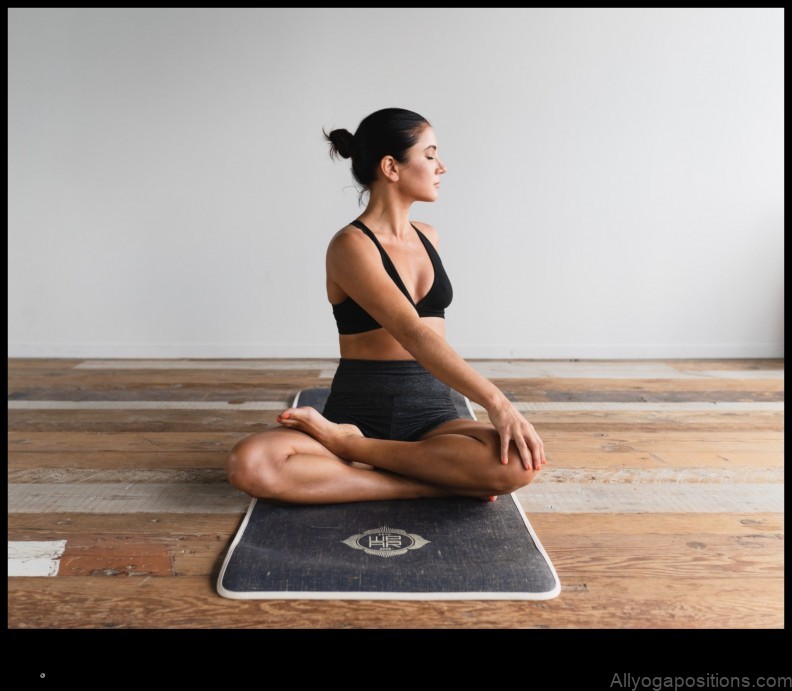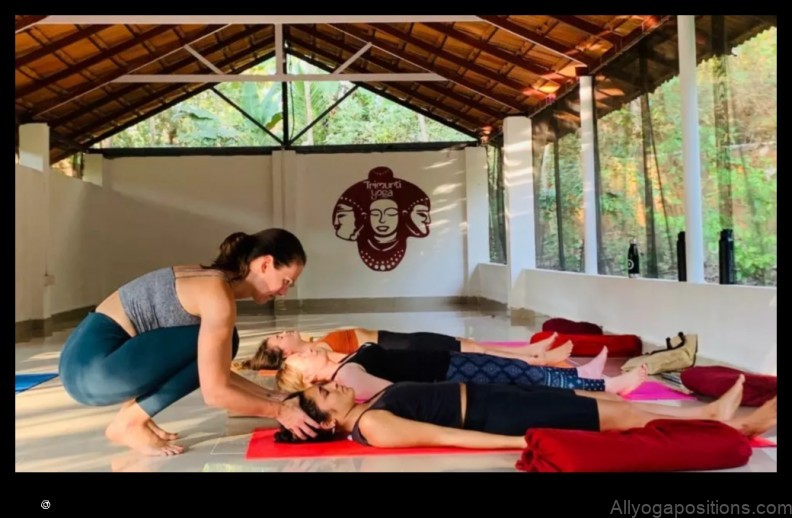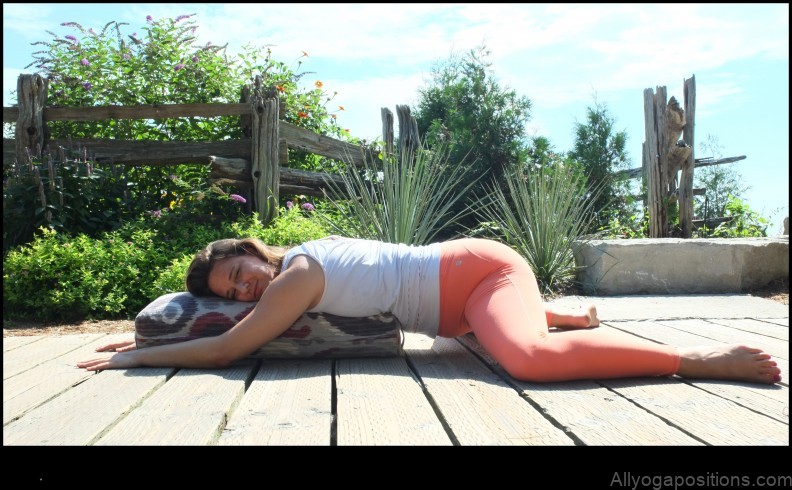
Yin Yoga: Embracing Stillness
Yin yoga is a gentle form of yoga that focuses on stretching and holding poses for long periods of time. It is said to promote deep relaxation, stress relief, and mindfulness.
This article will provide an introduction to Yin yoga, including its benefits, contraindications, and how to practice it safely.

Introduction to Yin Yoga
Yin yoga is a relatively new form of yoga that was developed in the early 2000s by Paul Grilley. It is based on the traditional Chinese philosophy of Yin and Yang.
Yin and Yang are two opposing forces that are said to exist in all things. Yin is associated with darkness, cold, and stillness, while Yang is associated with light, heat, and movement.
Yin yoga is said to balance the yin and yang energies in the body by focusing on stretching and holding poses for long periods of time. This allows the body to relax and release tension, while also improving flexibility and range of motion.
Benefits of Yin Yoga for Beginners
Yin yoga is said to offer a number of benefits for beginners, including:
- Improved flexibility
- Increased range of motion
- Reduced stress and anxiety
- Improved sleep
- Increased energy
- Enhanced mindfulness
It is important to note that Yin yoga is not a vigorous form of exercise and is not designed to burn calories or build muscle. However, it can be a very effective way to improve your overall health and well-being.

Contraindications for Yin Yoga
Yin yoga is generally safe for most people, but there are some contraindications to be aware of. These include:
- Pregnancy
- Recent surgery
- Inflammatory conditions
- High blood pressure
- Heart disease
If you have any of these conditions, you should talk to your doctor before starting a Yin yoga practice.

How to Practice Yin Yoga
Yin yoga is typically practiced in a quiet, dimly lit room. You will need a yoga mat, a few blocks or bolsters, and a timer.
To begin, lie down on your back and place a bolster or folded blanket under your knees. Close your eyes and relax your body. Take a few deep breaths and let go of any tension.
Once you are relaxed, begin to move into the poses. Hold each pose for 2-5 minutes, or for as long as you comfortably can. It is important to listen to your body and not to push yourself too hard.
When you are finished with a pose, slowly release it and come back to a seated or lying position. Take a few deep breaths and relax your body.
Yin yoga is a slow and gentle practice, so it is important to take your time and listen to your body. If you feel any pain, simply release the pose and come back to a comfortable position.
Yin Yoga Poses for Beginners
The following are some Yin yoga poses that are good for beginners:
- Child’s pose
- Reclining bound angle pose
- Seated forward bend
- Pigeon pose
- Half-splits
For more information on Yin yoga poses, you can consult a yoga teacher or online resource.
Yin Yoga Sequence for Beginners
The following is a simple Yin yoga sequence that is suitable for beginners:
- Child’s pose (5 minutes)
- Reclining bound angle pose (5 minutes)
- Se
Yin Yoga Stillness - A type of yoga that focuses on holding poses for long periods of time
- Promotes deep relaxation and stress relief
- Can help to improve flexibility and range of motion
- May be beneficial for people with chronic pain
- A state of mental and emotional calmness
- Can be achieved through meditation, yoga, and other relaxation techniques
- Promotes a sense of peace and well-being
- May be beneficial for people with anxiety and depression
Meditation Relaxation - A mind-body practice that involves focusing the mind on a single object or thought
- Can help to reduce stress, anxiety, and depression
- May improve focus and concentration
- Can be beneficial for people with chronic pain
- A state of physical and mental ease
- Can be achieved through yoga, meditation, and other relaxation techniques
- Promotes a sense of peace and well-being
- May be beneficial for people with anxiety and depression
Mindfulness Benefits - A state of awareness of the present moment
- Can help to reduce stress, anxiety, and depression
- May improve focus and concentration
- Can be beneficial for people with chronic pain
- Yin Yoga can help to improve flexibility and range of motion
- Yin Yoga can help to relieve stress and anxiety
- Yin Yoga can help to improve sleep quality
- Yin Yoga can help to reduce pain
Introduction to Yin Yoga
Yin Yoga is a type of yoga that focuses on the deep stretching of connective tissues, such as the fascia, ligaments, and tendons. It is a slow-paced practice that emphasizes relaxation and mindfulness.
Yin Yoga is said to be beneficial for a variety of conditions, including stress, anxiety, pain, and fatigue. It can also help to improve flexibility, balance, and range of motion.
Yin Yoga poses are held for longer periods of time (typically 2-5 minutes), and the focus is on deep relaxation and mindfulness. The poses are typically done on the floor, and props are often used to support the body.
Yin Yoga is a gentle practice that is accessible to people of all levels of fitness. It is a great way to relax and de-stress, and it can also help to improve your overall health and well-being.
III. Contraindications for Yin Yoga
Yin yoga is generally safe for most people, but there are some contraindications to be aware of. These include:
Pregnancy. Yin yoga is not recommended for pregnant women, as it can put too much strain on the uterus.
Recent surgery. Yin yoga should be avoided for at least six weeks after surgery, as it can slow down the healing process.
Injury. If you have any injuries, you should avoid doing yin yoga poses that aggravate the injury.
High blood pressure. Yin yoga can lower blood pressure, so it should be practiced with caution by people with high blood pressure.
Heart disease. Yin yoga can slow down the heart rate, so it should be practiced with caution by people with heart disease.
Seizure disorders. Yin yoga can trigger seizures, so it should be avoided by people with seizure disorders.
Mental illness. Yin yoga can aggravate mental illness, so it should be practiced with caution by people with mental illness.Benefits of Yin Yoga for Beginners
V. Yin Yoga Poses for Beginners
Yin Yoga poses are designed to be held for a long period of time, typically 3-5 minutes. They are typically performed on the floor and involve gentle stretching of the joints and muscles. Some common Yin Yoga poses include:
- Seated Forward Fold
- Reclining Bound Angle Pose
- Pigeon Pose
- Supported Bridge Pose
- Supine Spinal Twist
When practicing Yin Yoga, it is important to listen to your body and not push yourself too hard. If a pose feels uncomfortable, simply modify it or come out of it altogether.
6. FAQ
* What is yin yoga?
* What are the benefits of yin yoga for beginners?
* What are the contraindications for yin yoga?
* How do you practice yin yoga?
* What are yin yoga poses for beginners?
* What is a yin yoga sequence for beginners?
* What are yin yoga props?
* What is yin yoga music?
* What is yin yoga clothing?
* What are some FAQs about yin yoga?VII. Yin Yoga Props
Yin yoga props can be used to support the body and make it easier to hold poses for longer periods of time. Some common props used in Yin yoga include:
- Yoga blocks
- Blankets
- Chairs
- Pillows
- Bolsters
Props can be used in a variety of ways to support the body in Yin yoga poses. For example, a yoga block can be used to support the head or neck in a forward fold, or a blanket can be used to support the knees in a seated forward bend.
Props can also be used to make it easier to transition into and out of poses. For example, a chair can be used to help you step into a standing forward bend, or a bolster can be used to support your back in a reclining twist.
Using props in Yin yoga can help you to relax more deeply into the poses and to get the most benefit from your practice. If you are new to Yin yoga, it is a good idea to experiment with different props to see what works best for you.
IX. Yin Yoga Clothing
Yin yoga clothing should be comfortable and allow you to move freely. It is important to wear clothing that is not too tight, as this can restrict your movement and make it difficult to practice the poses.
Some good options for Yin yoga clothing include:
- Loose-fitting pants or leggings
- A tank top or t-shirt
- Socks or slippers
- A yoga mat
It is also important to wear clothing that is made from natural materials, such as cotton or wool. This will help to wick away sweat and keep you cool and comfortable during your practice.
If you are new to Yin yoga, it is a good idea to start with a basic outfit that you are comfortable in. As you progress in your practice, you may want to experiment with different types of clothing to find what works best for you.
IX. Yin Yoga Clothing
Yin yoga is a slow-paced practice that focuses on holding poses for long periods of time. As a result, it’s important to wear comfortable clothing that won’t restrict your movement.
Some of the best clothing options for Yin yoga include:
- Loose-fitting pants or leggings
- A tank top or T-shirt
- A sports bra
- Socks or slippers
It’s also important to wear clothing that wicks away sweat, as you’ll likely be working up a sweat during your practice.
If you’re new to Yin yoga, it’s a good idea to try out a few different clothing options to see what feels most comfortable. You may also want to experiment with different thicknesses of clothing to see what works best for you.
Ultimately, the best clothing for Yin yoga is whatever makes you feel most comfortable and allows you to move freely.
X. FAQ
Q1: What is Yin Yoga?
Yin Yoga is a type of yoga that focuses on stretching and holding poses for long periods of time. It is said to help improve flexibility, balance, and relaxation.Q2: What are the benefits of Yin Yoga for beginners?
Yin Yoga can be beneficial for beginners because it is a gentle form of yoga that can help to improve flexibility, balance, and relaxation. It can also help to reduce stress and anxiety.Q3: What are the contraindications for Yin Yoga?
Yin Yoga should not be practiced by people with certain medical conditions, such as high blood pressure, glaucoma, or osteoporosis. It is important to consult with a doctor before starting any new yoga practice.Table of Contents
Maybe You Like Them Too
- Mindful Reading A Meditation for Deeper Understanding
- Yoga for Inner Strength 7 Poses to Build Emotional Resilience
- Yoga for Bladder Health 5 Poses to Help You Feel Your Best
- Stress Less, Meditate More 5 Simple Techniques for Relaxation
- Wisdom in Motion Yoga for Inner Insight Discover the ancient practice of yoga and how it can help you achieve greater mindfulness, clarity, and peace of mind.
